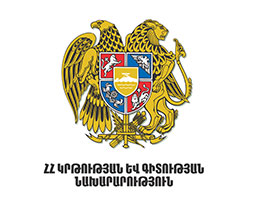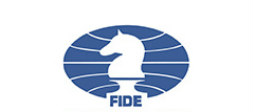
 ChessAcademy.am
ChessAcademy.am
The Process of Chess Textbooks’ Edition According to Razmik Avagyan: Overcoming the Obstacles.
 We talked about the process of editing chess textbooks with Razmik Avagyan, who is a teacher, chess player and an arbiter. Mr Avagyan has been working in weekly magazine "Chess in Armenia" for a long period of time. Mr. Avagyan received an invitation to work with the chess textbooks’ editorial team from the Vice President of Chess Federation of Armenia, Founder-President of the Chess Academy of Armenia, grandmaster Smbat Lputian and accepted the invitation with pleasure.
We talked about the process of editing chess textbooks with Razmik Avagyan, who is a teacher, chess player and an arbiter. Mr Avagyan has been working in weekly magazine "Chess in Armenia" for a long period of time. Mr. Avagyan received an invitation to work with the chess textbooks’ editorial team from the Vice President of Chess Federation of Armenia, Founder-President of the Chess Academy of Armenia, grandmaster Smbat Lputian and accepted the invitation with pleasure.
Mr. Avagyan says that the members of the editorial team received every next chapter of the textbook from H. Toomanyan and editing accordingly. The lessons were organised in order and were filled with text content. This process was accompanied by intense discussions between members of the editorial staff who ultimately achieved a consensus. From time to time, the editorial committee held meetings with the author of the book Hamlet Toomanyan to discuss corrections and adjustments to the books. According to Mr. Avagyan, the most important principle was that the educational material should be adjusted to meet the needs and abilities of junior school children in order to spark interest in chess and analytical thinking within them.
Trying to assess the quality of editing the textbooks, Mr. Avagyan stressed that looking back on the tremendous work that has been done, it must be admitted that the book has a need for a certain change. He particularly came to this realisation while teaching chess at school. He argues there is a need to remove some of the themes and replace them with other materials. Some of the tasks in the books are only accessible to children who are gifted with chess talent. However, the primary goal of chess as part of a public education is the development of junior school children intellectual abilities. Furthermore, we should also try to include more interesting games of chess in the school curriculum which would make the learning process more exciting and incentivise children to continue to play beyond completing the three-ye compulsory three year study at school.
According to Mr. Avagyan, chess education textbooks are designed in such a way that they do not include chess problems that are difficult for school children with average skills, but paradoxically, sometimes there are complaints by some teachers and parents that come to prove the fact that textbooks’ problems are difficult for some of the children. Mr. Avagyan argues that this is due to the fact that some elementary school pupils have abilities that are below average. Referring to the opinion of psychologists who have stated that some first-year pupils are not ready to meet the demands of the school, Mr. Avagyan argues that we have to deal with the systemic problem. Schoolchildren attending classes start facing problems related to the education process, and, naturally, they also encounter problems while studying chess. This is inevitable because chess requires a specific kind of intelligence.
Two equally important factors ensure the successful of teaching of chess: the role of the teacher and the chess textbook. It is not only the teacher’s chess skills that is very important, but also their pedagogical qualities. Chess must be taught by specialists who cover the topics included in the books in the best way, and most importantly, delivering the educational material in an interesting and engaging way. To this end, it is very important that now Armenian State Pedagogical University prepares teachers for secondary schools.
Speaking about the quality of language used in the textbooks, Mr. Avagyan noted that the stylistic language used in the book meets high standards, thanks to the professional work done by scientist Gagik Minasyan. As for the debates arising between the editorial team regarding the correct translation of a technical chess terms, Mr. Avagyan thinks that it was impossible to avoid those disputes. For example, the books use the "auxiliary mate" term, but in the past the term "cooperative mate" was used instead. Although after extensive debates the editorial team chose the new version of the term, Mr. Avagyan felt more compelled to use the older version of the term.
Highlighting the importance of chess inclusion in the school curriculum, Mr. Avagyan stressed that successful implementation of the idea depends on overcoming a number of problems and challenges, some of which are objective, while others subjective. This goal can be achieved by hard teamwork done on a daily basis.
By Tatev Khachatryan




